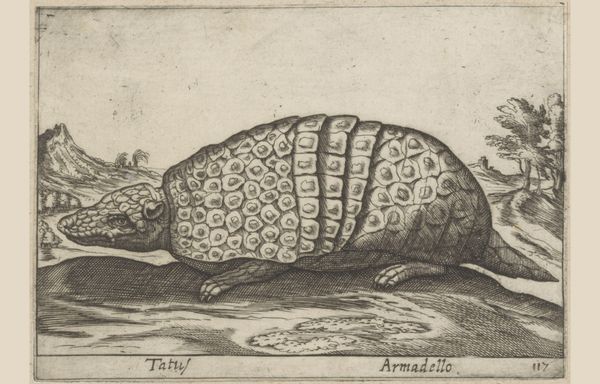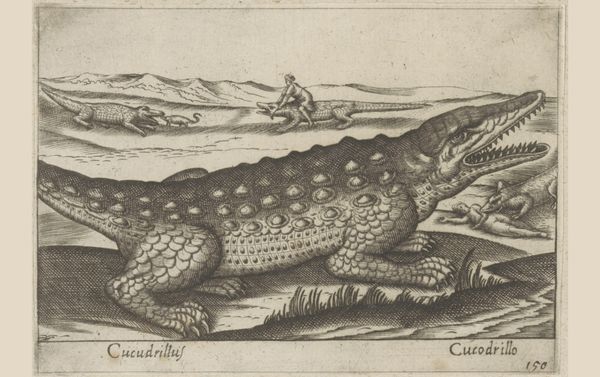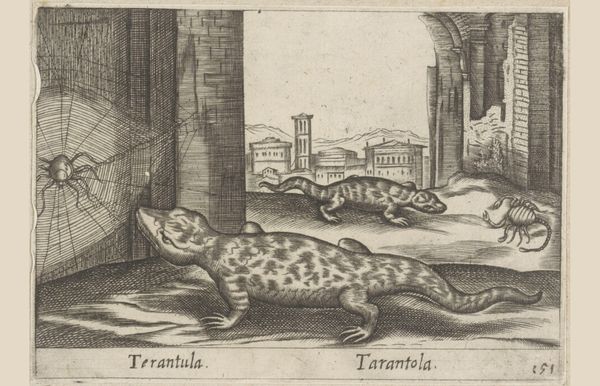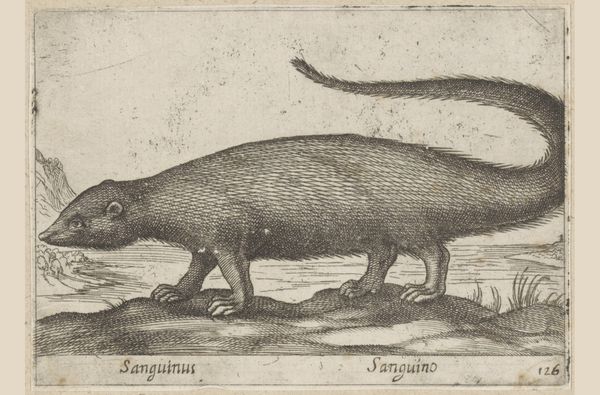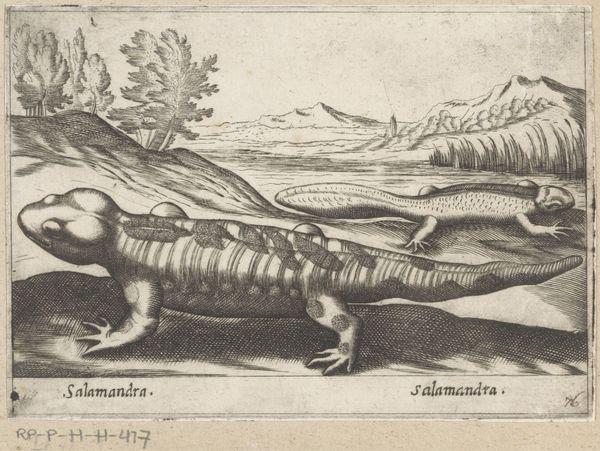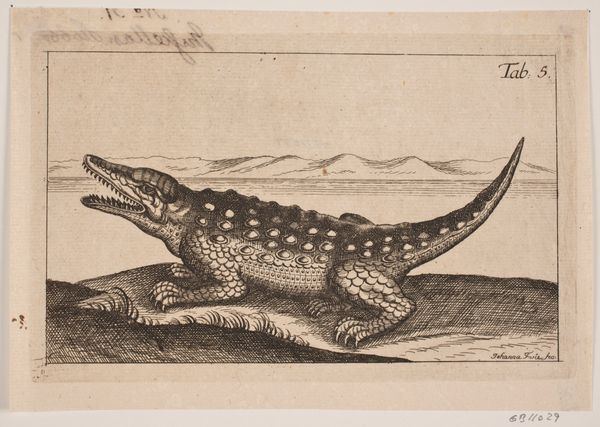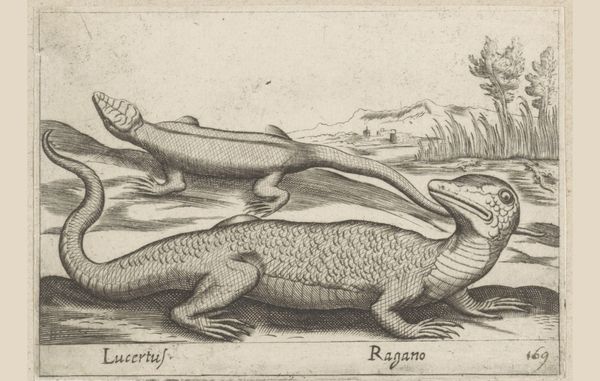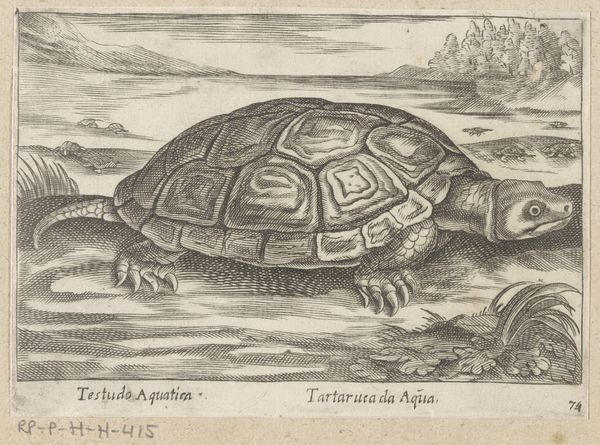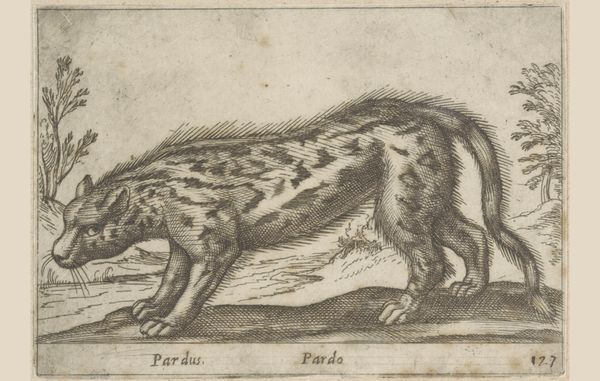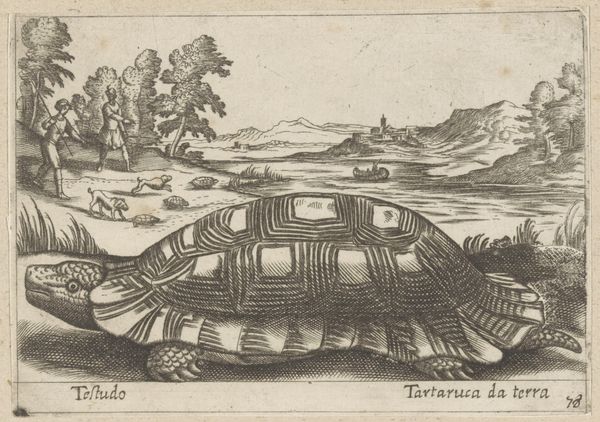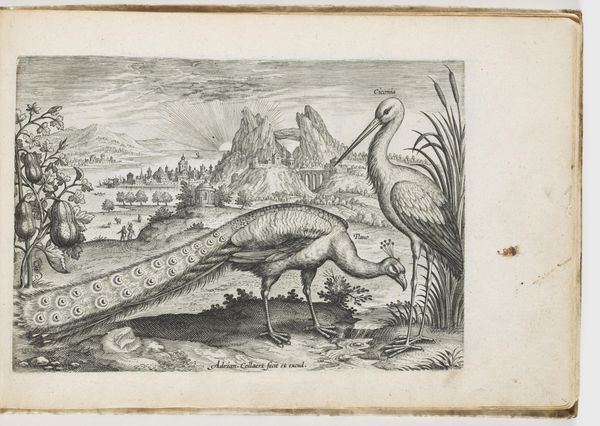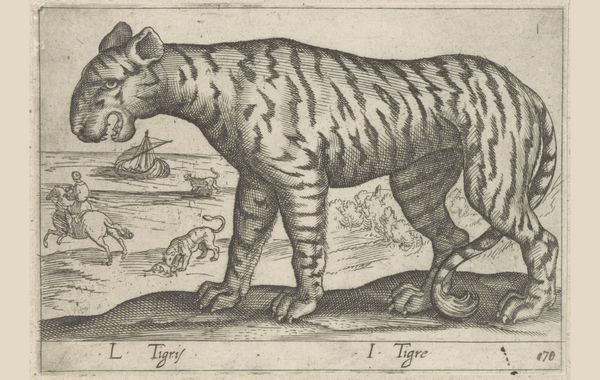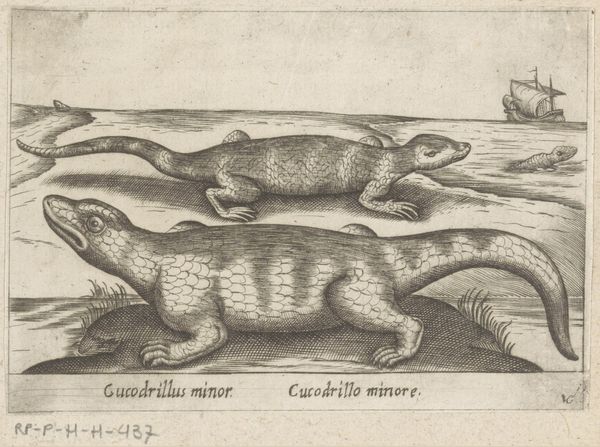
print, engraving
#
baroque
# print
#
engraving
#
realism
Dimensions: height 95 mm, width 137 mm
Copyright: Rijks Museum: Open Domain
Curator: Let’s turn our attention to "Gordeldier," or "Armadillo" by Antonio Tempesta, an engraving dating back to before 1650, now in the Rijksmuseum collection. It strikes me immediately how…oddly endearing this armored creature is, despite the somewhat clinical rendering. Editor: Endearing, yes, but I’m more captivated by the image's historical context. As a print, this wasn't just art; it was a commodity. Engravings facilitated the dissemination of knowledge, shaping European perceptions of the exotic New World. The means of production here – the labor of the engraver, the copperplate, the printing press – speak volumes about the era’s burgeoning print culture and its role in shaping scientific and popular understanding. Curator: A fascinating point about dissemination, though I can’t help but see the allegorical undercurrents at play. The armadillo, in its shell, could symbolize protection, resilience, even perhaps the soul's defense against earthly temptations. These animal images often transcended mere documentation; they were laden with moral weight. The indigenous man is there in the background as a resource that utilizes it for his own, basic human, needs. Editor: I agree that we see allegories and animal metaphors emerging during this period, but there is evidence suggesting there was more to it for the artists and natural scientists that took up realism styles such as in "Gordeldier." Note the texture – how Tempesta used the engraving technique to mimic the animal’s carapace and scales. Think about the materiality here: metal on paper creating the illusion of animal texture, revealing much curiosity to show realism more than any metaphorical symbol, as you suggest. And what that has to do with a consumeristic appetite, for image, goods, science? Curator: It's definitely more than that—there’s a curious flattening here, where realism merges with almost cartoonish exaggeration. I can see now that is meant to feed consumption from a scientific side, and also from an exotification of nature that can even become…fashion. Note the pose the "Tatus" assumes. The exotic is normalized, made understandable via its inclusion in the landscape with this native worker to the background, also becoming more desirable via display of its skin details! Editor: I hadn't considered that, the fashionable element. Seeing Tempesta’s armadillo as both a product of its time and as a harbinger of our own image-saturated culture shifts my understanding quite a bit. It's the cycle of production, dissemination, and ultimately, the integration of the exotic into the everyday, even into something desirable to display at home that becomes obvious to me now. Curator: The discussion today of how that came to be helped bring nuance, didn't it?
Comments
No comments
Be the first to comment and join the conversation on the ultimate creative platform.
